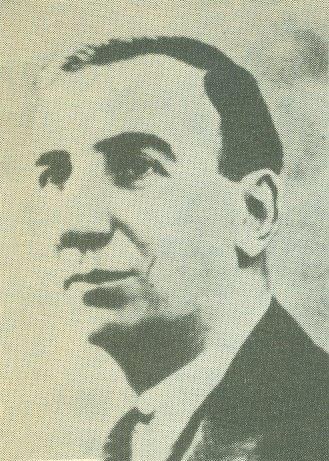Harry Bronfman became the prominent member of the Bronfman family who was in the hotel business in Yorkton. Harry and his older brother Abe bought the Balmoral Hotel together in 1905. They both had hotel experience, Abe at 22 years of age and Harry at 19, had owned the Anglo-American Hotel at Emerson, Manitoba. The Balmoral Hotel bar In those years, had a long, fully mirrored wall, good lighting, fancy tin ceiling, and brass foot railing. These were “stand-up” bars — no tables and chairs were around and so a man tended to lean on the bar counter, and maybe put one foot on the brass railing and if he was a tobacco chewing customer, he would try to stand within spitting distance of a “spittoon.” Women were then not allowed in these bars, but probably very few ever wanted to enter anyway. It was bad enough if you were the hotel owner’s wife and had to clean up every night! Harry became sole owner of the Balmoral in 1908, after an argument with Abe about his poker playing. Their father purchased a hotel for Abe in Port Arthur, Ontario. There are the error-filled stories that Sam Bronfman was prominent in the liquor business in Saskatchewan! In 1908, Sam was only 17 years old when it appears that Harry would have him helping out at the Balmoral Hotel off and on, and Sam was 23 years old when their father bought a hotel for him in Winnipeg. Saskatchewan enacted Prohibition legislation in 1915 with the shutting down of bars, there was a dramatic slump of the hotel business. Harry and Sam conferred often, and both began looking for alternatives. It was illegal to sell liquor to anyone within the province, but perfectly legal for druggists to buy liquor for medicinal purposes. It was also legal to supply liquor to other provinces. Harry applied for a wholesale druggist’s license, and erected the Canada Pure Drug Company next door, on the east side of the Balmoral Hotel. He manufactured liquor and imported hard liquor from various markets. After Prohibition hit the United States, the brothers saw a very lucrative export market. Harry and Sam expanded operations to Regina, and established many legal liquor warehouses along the Saskatchewan/Montana and North Dakota boundaries. By 1920, the Bronfmans were extremely wealthy. Both Harry and Sam described their business as licensed legal operations, claiming no responsibility for what happened to the liquor supplies after they had left their premises. Certainly, the Bronfmans were not alone by any means in the traffic of liquor, both within the legal and illegal frameworks. They had quite a bit of competition. However, because of the size of their operations, they became the special target from small time gangsters, and from less successful liquor operators. The Police had problems enforcing the laws — the Bronfmans had no problems breaking some liquor laws. More stories could have been told, were it not that individuals and families did not want to go down in history, as having been involved in these undertakings. Harry bought a house in Regina and moved the family there around 1920 or 1921. But, tragedy struck at the Bienfait, Saskatchewan railway station on October 2, 1922, when their brother-in-law Paul Matoff was shot and killed, leaving his wife Jean and 2 children. The murder was never solved. This was a great shock to the Bronfman family. They were out of their league — they were not into organized crime. Export warehouses were closed by the Saskatchewan government in 1922. Around 1923, Harry closed all liquor businesses and moved to Winnipeg, and eventually Montreal. It is there that Sam becomes prominent in the liquor business. Harry is relegated to the background. In 1927, Bronfmans acquired Seagrams and continued to acquire enormous wealth in the liquor enterprise — an enterprise which had its roots in Yorkton. (Many people think Seagrams was Bronfmans’ original label. It was not. The Joseph E. Seagram and Sons of Waterloo, Ontario had been in existence since the mid 1800s.)


.png;w=120;h=80;mode=crop)

